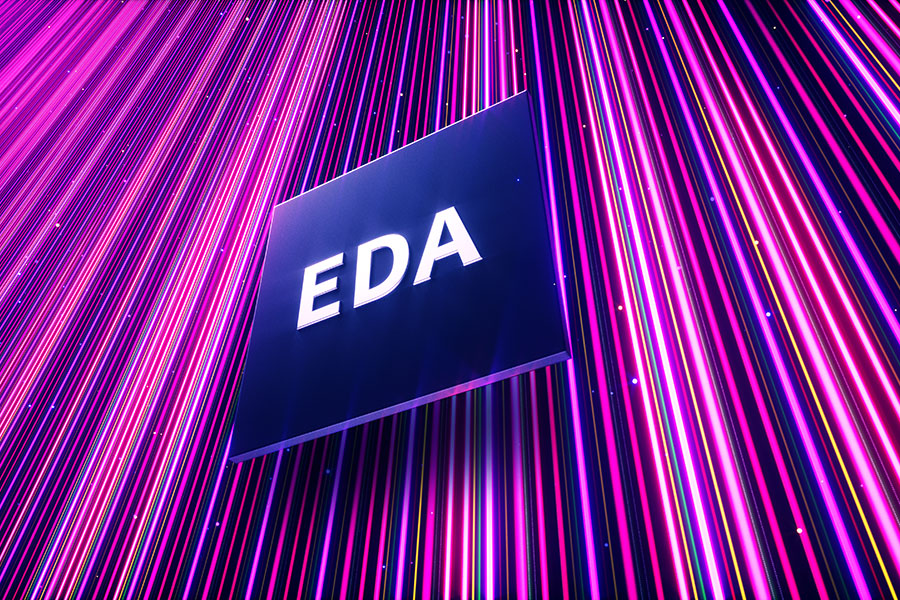
独家:Cadence和Synopsys特供中国版EDA工具曝光,中国市场仍举足轻重
独家:Cadence和Synopsys特供中国版EDA工具曝光,中国市场仍举足轻重
 webcache.googleusercontent.com
webcache.googleusercontent.com
Cadence and Synopsys provide tailored version of EDA tools for China, the Chinese market still plays a decisive role
Affected by a series of new export control regulations against China promulgated by the US BIS on October 7, it can be used for EDA necessary for logic chips with non-planar transistor architectures (ie FinFET or GAAFET) of 16nm or below 14nm. Software, which cannot be sold to Chinese customers since October 14, aims to suppress China's development in advanced technology.
Although the EDA software for the GAAFET structure is a tool that all semiconductor companies must use after entering the advanced process after 3nm, although it is not the mainstream demand of domestic IC design companies, it still caused a big blow to industry confidence.
For several leading EDA companies, they obviously don't want to lose the huge market in China. According to an email message obtained by Jiwei.com recently, Cadence has launched an "export version" software specially for domestic customers to meet the needs of Chinese customers.
Innovus Implementation System is Cadence's design implementation platform for advanced node design, which provides the layout, optimization, routing and clocking functions required by the digital backend (IC layout design). The ICC tools of Innovus and Synopsys are currently the most important digital back-end design tools.
According to this email sent to customers by Cadence on October 27, before the new ban came into effect on October 14, Innovus’s export control classification number was classified as (ECCN) 3D991, which does not restrict sales to China, but after the 14th , restricted by the "3D6 rules", Innovus tools supporting GAAFET technology can no longer be sold to Chinese customers.
In this regard, Cadence launched a version of InnovusExport21 specially for China, which deleted the support and functions of GAAFET technology, and the full version was renamed Innovus211.
A designer familiar with the matter revealed to Jiwei.com that the full version of Innovus211 downloaded by domestic customers before October 14th can still be used, but after that, they can only upgrade to version 22.3x at most; after the 14th, domestic ( Including the remaining restricted countries listed in the United States) can only use the InnovusExport21 version, and can also be updated. "The two versions of the software will use their respective license keys after November 4th," he said.
In addition, the United States currently does not restrict Chinese companies from remotely using Innovus211 through cloud services. In other words, as long as the server is a cloud service provider in a non-regulated country and region, it can still be accessed and used at present, but this loophole is expected to be filled soon. "For this reason, many domestic companies have downloaded a wave of crazy a few weeks ago." He said.
It is reported that Synopsys also issued a similar notice for the Fusion Compiler tool on November 11, which is divided into a full version and an export version. According to the data, Fusion Compiler is the only RTL-to-GDSII product in the industry that supports a single data model and golden signoff standard. It uses a highly scalable unified data model and includes analytics from the industry's gold sign-off tools. As the core of Synopsys' Fusion Design Platform, it redefines the boundaries of traditional EDA tools such as logic synthesis, place and route, and signoff verification.
The above-mentioned designers believe that it is estimated that the three major EDA giants will carry out similar (version cutting) actions to reduce business losses in China.
According to Jiwei.com, currently domestic design companies involved in GAAFET technology mainly include AI chips, network chips, CPU/GPU/DPU, Arm CPU, mining machine ASIC, etc. They have practical requirements for 5nm and more advanced technology.
For EDA companies, their profits mainly come from the authorization of software licenses. In China, EDA companies also charge according to the number of licenses of EDA tools sold, and each license is usually sold for three years, and the unit price of different EDA tools varies greatly. Since the complexity of digital back-end layout and routing tools is the highest, and the workload is also the largest in chip design, the unit price of the license is the most expensive.
Both the Cadence Innovus platform and the Synopsys Fusion Compiler platform can be said to be very important digital back-end (physical design) tools, which need to be closely integrated with the process.
Among the many domestic EDA start-ups, according to Jiweiwang, the companies that have layout in the corresponding tools include Laxcen, Hongxinwei and Xinxingji, but there is still a long way to go before the actual application to the client.
Not long ago, in response to the ban, Nvidia also launched a special A800 for Chinese customers, which complies with the new US export control regulations and can replace the A100 that is restricted by the new regulations.
This is the first time that a U.S. semiconductor company has made public its efforts and achievements to manufacture advanced processors for China in compliance with the new U.S. export control regulations. The responses of Cadence and Synopsys exposed this time show that China still plays a decisive role in the semiconductor market.
